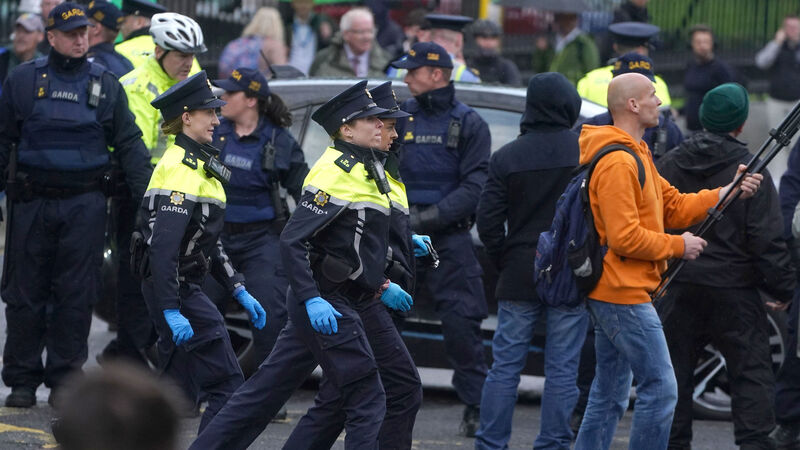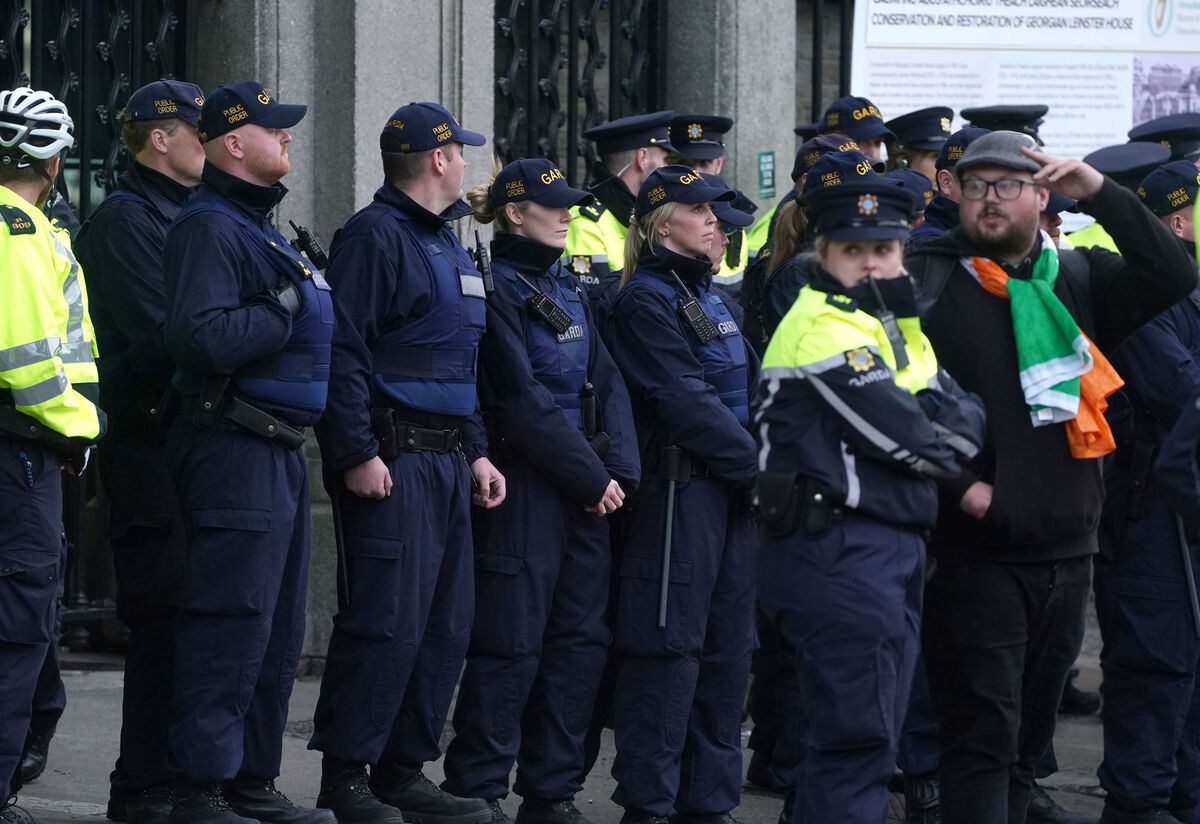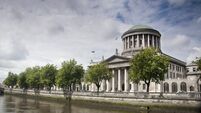Mick Clifford: Fear and loathing at Leinster House

Members of the Garda and the Garda Public Order Unit outside Leinster House, Dublin, as the Dáil resumesd.
The scenes outside Leinster House last Wednesday require a swift and serious response from the criminal justice system. The harassing and attacking of public representatives and others demands no less. This was not an ordinary public order incident. It was, as noted by the Ceann Chomairle Seán Ó Fearghail, an attack on democracy. The outcome represented a failure of both garda intelligence and the sufficient deployment of resources. There is, no doubt, plenty of video footage with which the gardaí can now work. The principals in these small number of apparently far-right groups can be easily identified. One can only hope that proper cases are assembled and the courts process the matter with the seriousness it deserves.
The shock engendered by the violence and disruption has prompted heightened concern about the rise of this kind of thuggery. All reportage from the scene describes the outstanding feature of the gathering as anger. The precise worldview of the thuggish element is unclear beyond hackneyed slogans about immigration and “Ireland for the Irish” with opposition to transgender rights and even the proposed right to housing referendum thrown in. But unlike the recent targeting of libraries, and before that refugee centres, there appeared to be no focus to their ire beyond generally lashing out at the concept of a national parliament.

Michael Healy Rae, who was subjected to appalling intimidation as he left Leinster House, is not a well-known champion of transgender rights. Neither has he ever advocated open borders for asylum seekers. But the bile showered on him, as he was escorted by two gardaí, was revolting, and must have been frightening. Had he been without the escort there is every chance he would have been assaulted. The anger at the root of the protest was quite obviously incoherent.
So what does all of this mean? There have been understandable fears expressed that it represents a major leap forward for the far right. This should be put in context. Last February, at the height of ugly protests outside refugee centres, a conference was held to analyse what was going on. A representative from the Far Right Observatory (now renamed the Hope and Courage Collective) which monitors this activity, told the conference that the level of “fear, noise and panic” created by these people did not reflect their numbers. In total, they consisted of “two or three small political organisations”, including “between 25 and 30 individuals”. These are the propagandists, the organisers, the disseminators of hatred towards minorities.
This is a very small number of committed individuals determined to disrupt and reshape our liberal democracy. Most of these people were present at Leinster House, but notably were not among the thirteen arrested, which suggests they were content to sit back and watch others do their violent bidding. As of now, they have absolutely zero political representation. A few dozen people in a state of five million can do damage but can surely be easily countered with proper application.
Beyond the committed activists there are figures in public life who happily sup at the trough of disillusion where the far right lurks. Elements in the wider media ecosystem are adept at issuing well-tuned dog whistles in areas like immigration. There are also a few politicians who are happy to hunt down floating votes, irrespective of the consequences. All three of the medium-sized parties in the current political firmament include individuals who have, at the very least, had bad thoughts in this regard. Less tolerance for any of that wouldn’t go astray. For instance, greater care should be taken among politicians with terms like “our own people” in a society where one in five residents were born outside the state.
There is also, however, a wider cultural phenomenon that is manna for the far right.
Most of this happens on social media but it is now leaking out into the real world. One narrative propagated frequently and cynically by populist political elements, on both the left and right, is that of the failed state. This portrays the country as a kip, run by kleptomaniacs who are in it exclusively for their own good at the expense of ordinary people. Whip that up enough times, and coated with anger, don’t be surprised when a thuggish element takes the battle directly to Leinster House.

Polarisation is an integral part of this milieu. Opposing sides on public matters are far less inclined to debate or argue their differences. They hurl abuse across cyberspace, and do their damnest to drown out anything that questions their narrative. One example where this has arrived in the real world occurred last Saturday in Dublin’s Merrion Square at a gathering and counter gathering centred on the touchstone of the culture wars, transgender rights. Both sides present claimed to be highlighting the “lived experience” of victims — their victims — and to be representative of the silent majority. In reality, both claims are highly dubious.
Gardaí were present and barriers erected between the two sides. Those who gathered to talk about the rights of women — as they saw it — tried to make speeches. Their opponents, representing transgender rights — as they saw it — didn’t just protest but shouted down the speeches. Differences have moved way beyond debate or argument to a point where the other side simply must not be heard. This particular barney has a preponderance of people on both sides who are highly educated and articulate yet the first instinct is to shut up the opposition. In such a cultural milieu, is it a surprise if people less resourced opt instead for violence?
Polarisation in the political sphere now knows few truces, even when it comes to attempting to marginalise the far right. For instance, last February at the height of the ugly protests against refugee centres, a counter-demonstration was organised in Dublin city centre. Before it took place, People Before Profit’s Mick Barry made it obvious that, in his opinion, taking on the far right didn’t require unity of purpose. “This needs to be a demonstration which is not just anti-racist, but anti-government,” he said. Immediately, anybody who supported the government — around 40% of the electorate — must have paused and wondered whether this gig was for them. In such a fractured public sphere is it any wonder that those wishing to disrupt see possibilities for exploitation?
There is plenty that we all can do to maintain the tenets of liberal democracy. Those who foment polarisation for their own uses or attempt to drown out debate might take a good hard look at themselves before decrying the culture that saw things descend to the point arrived at last Wednesday. The thugs who brought violence to Leinster House must face the full rigours of the law but let’s not kid ourselves that they are operating in a vacuum.















